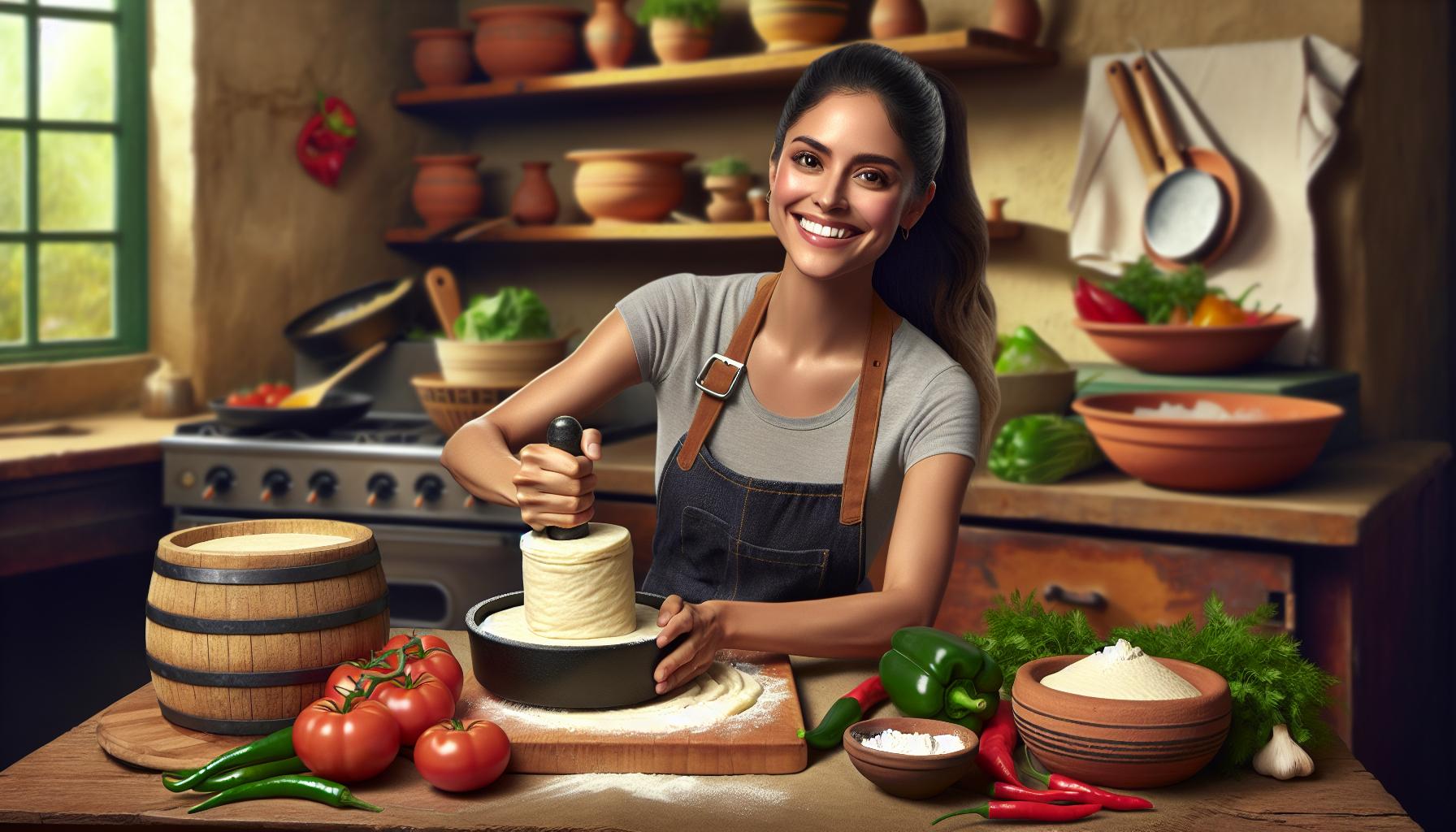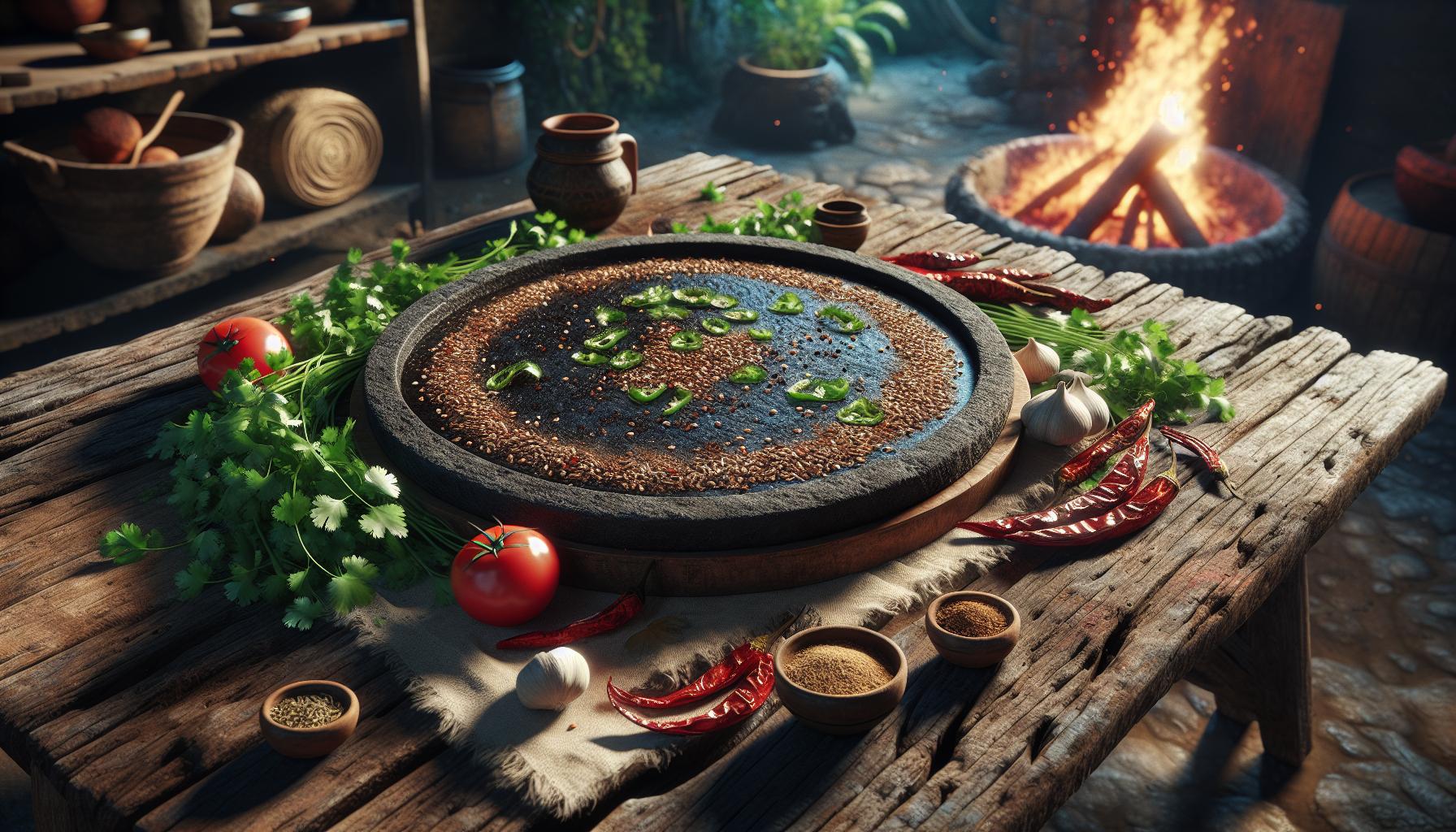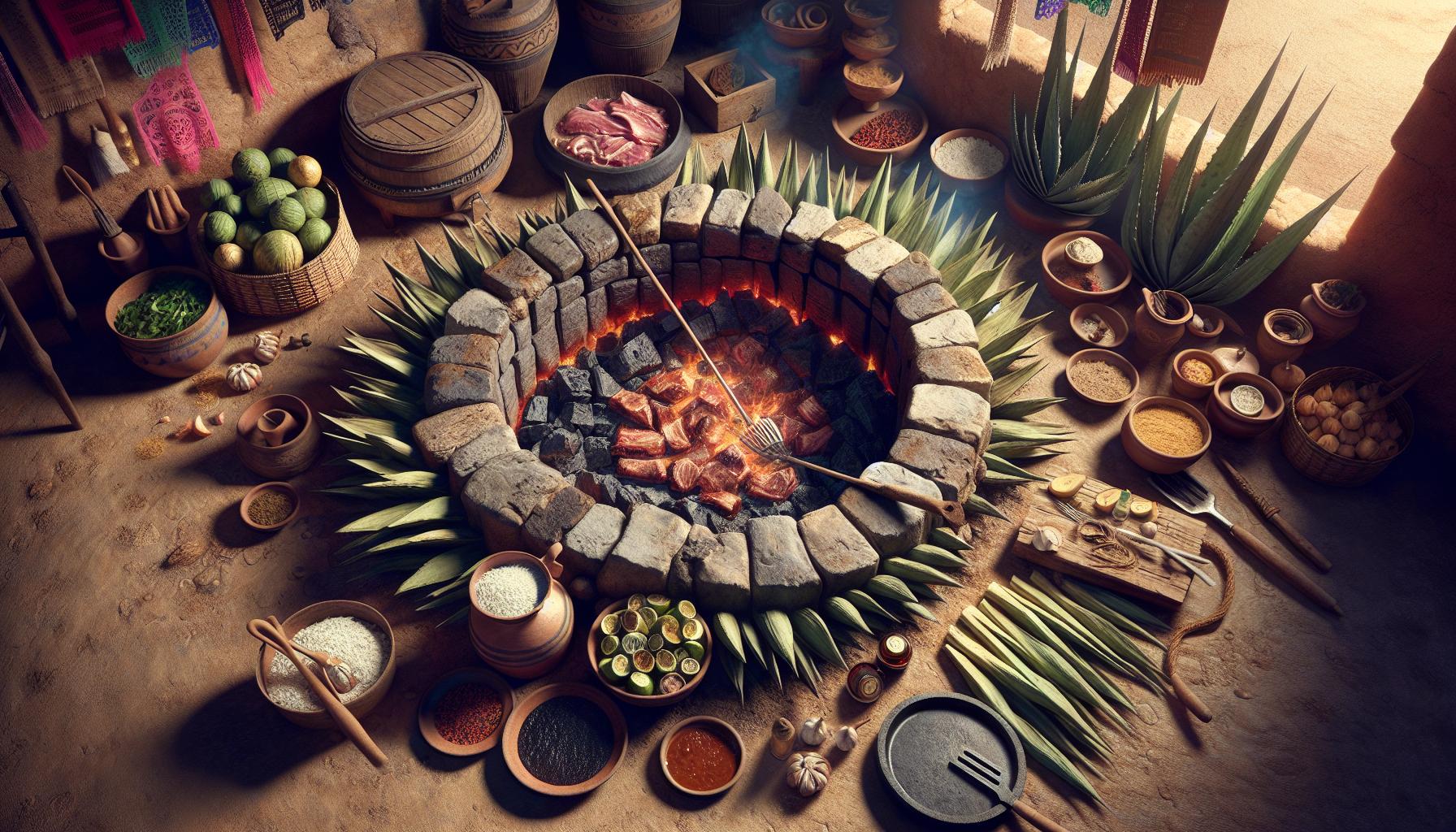
Mexican cuisine stands as a testament to centuries of culinary innovation with its vibrant flavors, bold spices and time-honored cooking techniques. From the art of nixtamalization to the smoky allure of traditional clay pots these methods have transformed simple ingredients into masterpieces that captivate taste buds worldwide.
Behind every authentic Mexican dish lies a collection of cooking techniques that have been passed down through generations. Whether it’s the slow-simmering of moles the careful char-roasting of chiles or the delicate hand-pressing of tortillas these methods aren’t just cooking steps – they’re cultural treasures that bring Mexican cuisine to life. Modern home cooks can master these techniques to create restaurant-quality Mexican dishes right in their own kitchens.
Mexican Cooking Techniques
Mexican cuisine relies on time-honored cooking techniques passed down through generations. These methods transform raw ingredients into complex flavors that define authentic Mexican dishes.
Nixtamalization of Corn
Nixtamalization transforms dried corn kernels into masa through an alkaline cooking process. This technique involves soaking corn in calcium hydroxide (cal) solution for 8-12 hours at 85°C. The process removes the outer hull, increases nutritional value by releasing niacin and softens the corn for grinding. Nixtamalized corn forms the foundation for tortillas, tamales, atoles and pozole. Modern Mexican kitchens use specialized equipment like grain mills to process the treated corn, though traditional methods employ volcanic stone grinders called metates.
Traditional Grinding With Molcajete
The molcajete stands as Mexico’s version of the mortar and pestle, crafted from volcanic rock. Cooks use circular grinding motions to create salsas, guacamoles and spice pastes in this three-legged stone bowl. The porous surface of the molcajete releases minerals that enhance flavors while creating ideal textures. Seasoning a new molcajete requires grinding rice or rock salt to remove loose stone particles. Expert cooks recognize the distinct taste difference between machine-processed and molcajete-ground ingredients, particularly in classic salsas like molcajete rojo or verde.
Cooking Over Open Fire and Comal

Traditional Mexican cooking techniques rely heavily on open-fire cooking and the use of a comal, a flat griddle that dates back to pre-Hispanic times. These methods impart distinctive flavors and textures to ingredients that define authentic Mexican cuisine.
Grilling and Roasting Chiles
Mexican cooks char-roast chiles directly over an open flame or on a comal to develop complex flavors and make peeling easier. Fresh poblanos, jalapeños, and bell peppers are placed on a hot comal or directly on stovetop burners until their skins blister and blacken evenly. The charred chiles are then wrapped in kitchen towels for 10-15 minutes, allowing the steam to loosen their skins. This process, called “tatemado,” creates smoky notes and tender flesh essential for dishes like rajas con crema, chiles rellenos, and various salsas.
Toasting Spices and Seeds
A comal transforms raw spices and seeds into aromatic ingredients through careful dry-toasting. Cumin seeds, coriander, pumpkin seeds, and sesame seeds are spread in a single layer on a heated comal, stirred continuously for 2-3 minutes until fragrant. The toasting process releases essential oils, intensifying flavors and creating deeper, nuttier notes. Toasted ingredients form the foundation of signature Mexican dishes like mole sauces, pipián, and traditional salsas. Seeds like pepitas turn golden brown and pop slightly when properly toasted.
Slow-Cooking and Braising Methods

Mexican slow-cooking techniques transform tough cuts of meat into tender delicacies while developing complex flavor profiles. These time-honored methods rely on low temperatures sustained over extended periods.
Making Traditional Moles
Traditional mole preparation involves a meticulous process of toasting dried chiles dried fruits nuts spices. Each ingredient requires individual attention, with spices toasted on a comal until fragrant dried chiles softened in hot water then ground into a paste. The mixture simmers for 4-6 hours developing layers of flavor from 20-30 different ingredients. Expert cooks add Mexican chocolate dark bread tortillas to thicken the sauce creating signature regional variations like Oaxacan mole negro Pueblan mole poblano. The sauce achieves its characteristic silky texture through constant stirring straining refined consistency.
Pit Cooking and Barbacoa
Barbacoa represents an ancient Mexican cooking method that uses underground pits lined with maguey leaves. The process starts with digging a 3-foot-deep pit heating volcanic stones placing seasoned meat wrapped in leaves. Popular cuts include lamb shoulder beef cheeks goat meat marinated with dried chiles garlic spices. The pit stays sealed for 8-12 hours allowing smoke steam to tenderize the meat. Traditional barbacoa preparation occurs in regions like Hidalgo Tlaxcala where specific techniques produce distinctive regional flavors. Modern adaptations use conventional ovens Dutch ovens maintaining similar cooking principles achieving comparable results.
Working With Fresh Masa and Dough

Fresh masa forms the foundation of numerous Mexican dishes, requiring specific techniques to achieve optimal texture and consistency. The proper handling of masa determines the success of traditional preparations like tortillas and tamales.
Tortilla Making Techniques
Making tortillas starts with testing the masa consistency by rolling a small ball that doesn’t crack at the edges. A tortilla press lined with plastic sheets creates uniform discs measuring 6 inches in diameter. The pressed tortilla releases easily from the plastic when the masa contains the correct moisture content. Cooking occurs in three stages on a preheated comal at 400°F: initial cooking for 45 seconds, flipping for 30 seconds to create surface bubbles, and a final 15-second flip to puff the tortilla. The tortilla edges lift slightly when ready, creating a pocket of steam that indicates proper cooking.
Tamale Preparation
Tamale masa requires a lighter consistency achieved by whipping lard or vegetable shortening until fluffy. The masa passes the float test when a small amount stays suspended in a glass of cold water. Spreading techniques vary by region: Central Mexican style uses thin layers while Oaxacan style features thicker masa walls. Assembly involves placing 2-3 tablespoons of masa on softened corn husks, spreading it evenly to create 1/4-inch thickness. The filling occupies the center third of the masa, leaving a 1/2-inch border at the bottom. Proper folding creates a tight seal, wrapping the husk first lengthwise then folding the narrow end up.
Essential Sauce-Making Methods
Mexican sauces form the foundation of the cuisine’s distinctive flavors. Traditional sauce-making techniques transform basic ingredients into complex flavor profiles through specific preparation methods.
Salsa Preparation
Raw salsas combine fresh ingredients in a molcajete through grinding motions that release essential oils. Roasted salsas start with charring tomatoes, tomatillos or chiles on a comal until blackened. A classic salsa roja requires blending roasted tomatoes with dried chiles, garlic cloves toasted on a comal until golden brown. For salsa verde, tomatillos simmer in water for 10 minutes before blending with serrano peppers, onion slices, cilantro leaves. Emulsified salsas incorporate oil or seeds – like pepitas in salsa macha – requiring constant whisking to achieve proper consistency.
Building Complex Flavors
Mexican sauce-making relies on layering flavors through specific cooking techniques. Charring vegetables releases deep caramelized notes while toasting dried chiles develops rich undertones. Spices toast in a dry skillet for 2-3 minutes until fragrant. Ingredients blend in stages: first charred items, then toasted elements, finally fresh components. Simmering sauces thicken naturally through reduction over low heat for 30-45 minutes. Regional variations incorporate unique ingredients: Yucatan’s recado rojo uses achiote paste, Oaxacan moles blend chocolate with chiles. Straining through fine-mesh sieves creates silky textures in complex sauces like pipián verde or mole negro.
Traditional Preservation Techniques
Mexican cuisine relies on time-tested preservation methods that extend food longevity while enhancing flavors. These techniques, passed down through generations, create distinct regional specialties across Mexico’s diverse culinary landscape.
Salt Curing and Drying
Salt preservation transforms fresh ingredients into concentrated flavor elements in Mexican cooking. Meat curing produces cecina, thin sheets of salted beef air-dried for 3-5 days until firm. Fish preservation creates bacalao, cod fillets packed in salt for 24-48 hours then sun-dried for 7-10 days. Traditional dried chilies undergo a 14-day drying process that concentrates their flavors into distinct varieties: ancho, guajillo, pasilla. Meat preservation through salt-drying dates back to pre-Hispanic times, with techniques varying by region: Yucatan’s salt-dried venison, Oaxaca’s dried beef strips, Puebla’s cecina enchilada.
Fermentation Methods
Mexican fermentation practices create signature flavors through controlled microbial activity. Pulque production ferments agave sap for 24-36 hours using naturally occurring bacteria. Tepache fermentation combines pineapple rinds with piloncillo sugar for 48-72 hours. Escabeche preserves vegetables in vinegar brine for 2-3 weeks, developing tangy flavors. Regional variations include:
- Yucatan’s recado rojo (achiote paste fermented with spices)
- Oaxaca’s tejate (fermented corn cacao drink)
- Jalisco’s jocoque (cultured cream similar to crème fraîche)
Traditional ceramic vessels called olla de barro maintain optimal fermentation temperatures between 68-72°F (20-22°C).
Sophisticated Culinary System
Mexican cooking techniques represent a sophisticated culinary system that’s been perfected over centuries. These time-honored methods don’t just create delicious food – they preserve cultural heritage and traditional knowledge that continues to influence modern gastronomy.
Mastering these techniques opens up a world of authentic Mexican flavors for home cooks. From nixtamalization to slow-cooking moles each method serves a specific purpose in creating the complex flavors and textures that define Mexican cuisine. Today’s cooks can embrace these traditional practices while adapting them to modern kitchens maintaining the soul of Mexican cooking for future generations.


